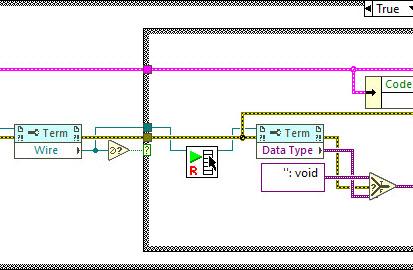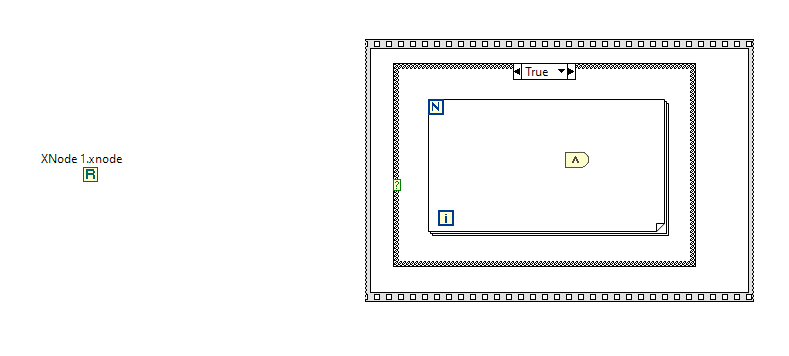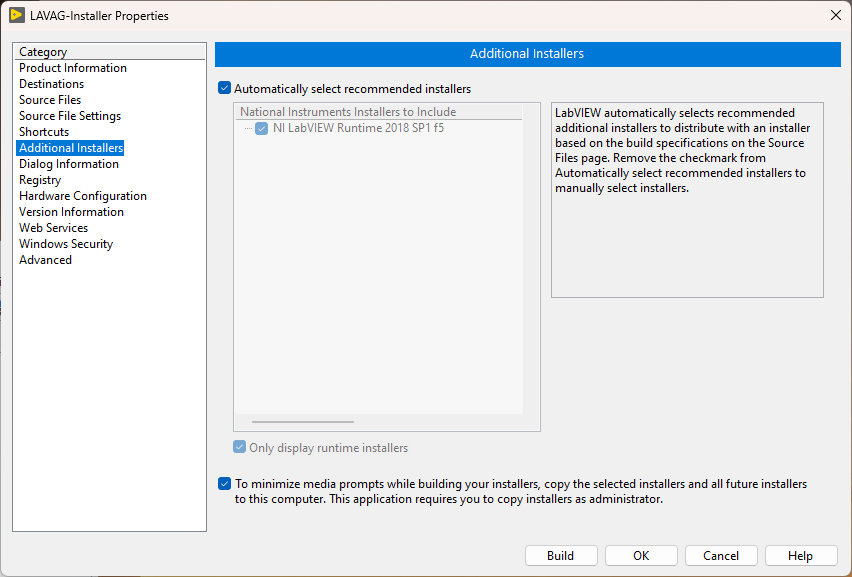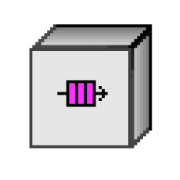Leaderboard
Popular Content
Showing content with the highest reputation since 12/25/2024 in Posts
-
I spent a long time online with YouTube support and finally got to the bottom of it. The Channel is back, and all the links work!4 points
-
Phew that is a pretty strong opinion! Although I personally am not a fan of the overall style of DQMH none of my problems are with the scripting/wizards or placeholder text. I think any framework that tries to do "a lot" will be complicated... your own personal framework (which you likely find trivial to use) is likely to be a bit weird to others. DQMH is extremely popular for a reason... To paraphrase the words of a wiser person than I, "please don't yuck someone elses yum"3 points
-
Many years ago I made a demo for myself on how to drag and drop clones of a graph. I wanted to show a transparent picture of the new graph window as soon as the drag started, to give the user immediate feedback of what the drag does and the window to be placed exactly where it is wanted. I think I found inspiration for that on ni.com or here back then, but now I cannot find my old demo, nor the examples that inspired me back then. Now I have an application where I want to spawn trends of a tag if you drag the tag out of listbox and I had to remake the code...(see video below). At first I tried to use mouse events to position the window, but I was unable to get a smooth movement that way. I searched the web for similar solutions and found one that used the Input device API to read mouse positions to move a window without a title and that seemed to be much smoother. The first demo I made for myself is attached here (run the demo and drag from the list...). It lacks a way to cancel the drag though; Once you start the drag you have a clone no matter what. dragtrends.mp4 Has anyone else made a similar feature? Perhaps where cancelling is handled too, and/or with a more generic design / framework? Drag window out of listbox - Saved in LV2018.zip3 points
-
The examples you provide are invalid JSON, which makes it difficult to understand what you are actually trying to do. In your VI, the input data is a 2D array of string but the JSON output is completely different. Your first step should be to define the types you need to produce the expected JSON output. Afterwards you can map your input data to the output data and simply convert it to JSON. The structure of the inner-most object in your JSON appears to be the following: { "Type":"ABC", "IP":"192.168.0.0", "Port":111, "Still":1, "Register":"Register", "Address":12345, "SizeLength":1, "FET":2, "Size":"big", "Conversion":"small" } In LabVIEW, this can be represented by a cluster: When you convert this cluster to JSON, you'll get the output above. Now, the next level of your structure is a bit strange but can be solved in a similar manner. I assume that "1", "2", and "3" are instances of the object above: { "1": {}, "2": {}, "3": {} } So essentially, this is a cluster containing clusters: The approach for the next level is practically the same: { "TCP": {} } And finally, there can be multiple instances of that, which, again, works the same: { "EQ1": {}, "EQ2": {} } This is the final form as far as I can tell. Now you can use either JSONtext or LabVIEW's built-in Flatten To JSON function to convert it to JSON {"EQ1":{"TCP":{"1":{"Type":"ABC","IP":"192.168.0.0","Port":111,"Still":1,"Register":"Register","Address":12345,"SizeLength":1,"FET":2,"Size":"big","Conversion":"small"},"2":{"Type":"ABC","IP":"192.168.0.0","Port":111,"Still":1,"Register":"Register","Address":12345,"SizeLength":1,"FET":2,"Size":"big","Conversion":"small"},"3":{"Type":"ABC","IP":"192.168.0.0","Port":111,"Still":1,"Register":"Register","Address":12345,"SizeLength":1,"FET":2,"Size":"big","Conversion":"small"}}},"EQ2":{"TCP":{"1":{"Type":"ABC","IP":"192.168.0.0","Port":111,"Still":1,"Register":"Register","Address":12345,"SizeLength":1,"FET":2,"Size":"big","Conversion":"small"},"2":{"Type":"ABC","IP":"192.168.0.0","Port":111,"Still":1,"Register":"Register","Address":12345,"SizeLength":1,"FET":2,"Size":"big","Conversion":"small"},"3":{"Type":"ABC","IP":"192.168.0.0","Port":111,"Still":1,"Register":"Register","Address":12345,"SizeLength":1,"FET":2,"Size":"big","Conversion":"small"}}}} The mapping of your input data should be straight forward.3 points
-
Look at this new download on VIPM https://www.vipm.io/package/bjm_lib_request_power/2 points
-
You want an ability to override the Equality or Comparison operators? I'm unsure, whether it really existed in OpenG packages, but now you have those neat malleable VIs, that let you do that: Search Unsorted 1D Array , Sort 1D Array , Search Sorted 1D Array. They have an additional input to specify your own equals or less function in a form of a custom comparison class or a VI refnum. There's an article to help: Creating a Custom Sorting Function in LabVIEW2 points
-
This is exactly what was said in that ancient thread: Tree control in labview. So if you add 65536*N to the Item Symbols property of the Listbox and have the "Enable Indentation" option activated, you shift the symbol/glyph and the text N levels to the right. Could be useful for simple 'parent-child' relationships, if you don't want to use a Tree. And still it's used in Find Examples / NI Example Finder window:2 points
-
I once went for an interview where they gave me a coding test and asked me to modify it. It was a very long time ago so I don't remember the exact modification they wanted (nothing to do with memory leaks) but I do remember the obtain queue and read queue inside a while loop with the release queue outside. I asked if they wanted me to also fix the memory leak as well as the modifications and they were a little puzzled until I explained what you have just said. I must have seen (and fixed) this while-loop bug-pattern a thousand times since then in various code bases. I also created this VI which I generally use instead of the primitives as it intialises on first call, can be called from anywhere, and prevents most foot-shooting by rolling them all into a single VI and ensuring all references but 1 are closed after use. Queue.vi2 points
-
2 points
-
In the past I have used the IMAQ drivers for getting the image, which on its own does not require any additional runtime license. It is one of those lesser known secrets that acquiring and saving the image is free, but any of the useful tools have a development, and deployment license associated with it. I've also had mild success with leveraging VLC. Here is the library I used in the past, and here is another one I haven't used but looks promising. With these you can have a live stream of a camera as long as VLC can talk to it, and then pretty easily save snapshots. EDIT: The NI software for getting images through IMAQ for free is called "NI Vision Common Resources". This LAVA thread is where I first learned about it.2 points
-
Just to share how I got around this: By deleting 1 front panel item at a time I found that one single control was causing PaneRelief to crash; an XY graph. Setting it temporarily to not scale and replacing it with a standard XY graph (the one I had had some colours set to transparent etc) was enough to avoid having PaneRelief crash LabVIEW, but it would now just present a timeout error: I found a way arund this too though: the VI in question was member of a DQMH lvlib that probably added a lot of complexity for PaneRelief. With a copy saved as a non-member it worked: I could replace the graph, edit the splitters with PaneRelief without the timeout error (even setting the size to 0), then copy back the original graph replacing the temporary one, and finally move the copy back into the lvlib and swap it with the original. Voila! What a Relief... 😉 I probably have to repeat this whole ordeal if I ever need to readjust the splitters in that VI with PaneRelief though 😮2 points
-
I confirm that this license is nearly identical to the standard EULA we use for our commercial products. Some wording is not applicable to a distributed palette of VIs like this. Our intention was to share a few reusable tools, used internally, with the community. Ideally, we should have released them under a standard open-source license such as MIT or a similar option. These VIs have been released “as-is,” without support or any guarantee that they will function for your specific use case. You may need to troubleshoot or fix any issues on your own. Feel free to use them in any context. I’ll look into whether it's possible to update the packages on the tool network to replace the current license with a more standard open-source one.2 points
-
I put a temporary ban on inserting external links in posts (except from a safe list). We'll see what affect it has.2 points
-
2 points
-
Your reporting of spam is helpful. And just like you are doing one report per user is enough since I ban the user and all their posts are deleted. If spam gets too frequent I notify Michael and he tweaks dials behind the scene to try to help. This might be by looking at and temporarily banning new accounts from IP blocks, countries, or banning key words in posts. He also will upgrade the forum's platform tools occasionally and it gets better at detecting and rejecting spam.2 points
-
2 points
-
Well, there are two aspects. The first is the technical one from hackers diving into the software and unhiding things that NI felt were not ready for prime time, to complicated for simple users, or possibly also to powerful. The main reason definitely always is however: if we release that, we have to spend a lot more effort to make it a finished feature (a feature for internal use where you can tell your users: "sorry that was not meant to be used in the way you just tried") is maybe 10 - 20% of development time than the finished feature for public use. There is also support required. That costs money in terms of substantial extra development, end user quality documentation (a simple notepad file doesn't cut it), maintenance and fixing things if something does not match the documented behaviour. And yes I'm aware they don't always fix bugs immediately (or ever) but the premise is, that releasing a feature causes a lot of additional costs and obligations, if you want to or not. The other aspect is, if someone who is an active partner and has active contacts with various people at NI, he is infinitely more likely to be able to influence decisions at NI than the greatest hacker doing his thing in his attic and never talking with anyone from NI. In that sense it is very likely that Jim having talked with a few people at NI has done a lot more to make NI release this feature eventually, than 20 hackers throwing every single "secret" about this feature on the street. In that sense the term "forcing NI's hands" is maybe a bit inaccurate. He didn't force them, but led them to see the light! Not out of pure selfless love, but to be able to officially use that feature for himself. The according Right-Click framework was a proof of concept to see how this feature can be used and mainly an example to other users how it can be used, and indeed once it worked it had fulfilled its purpose. That it was not maintained afterwards is not specifically JKI's fault. It is open source, so anyone could have picked up the baton, if they felt it was so valuable for them. The problem with many libraries is actually, if they are not open source and free, many complain about that, if it is open source and/or free, they still expect full support for it! In that sense I have seen a nice little remark recently:2 points
-
Well, you are missing some important details in "The story of how this came about". So maybe indeed "it is worth a post of its own". It was LabVIEW 7.0 where they forgot to put a password on one of the VIs shipped with LabVIEW. And that VI had some node(s) on its block diagram including, I think, the BD reference property for the VI class. The community indeed got excited. But what did NI do? They tried to hide everything again in LabVIEW 7.1! I made a joke then that "our mother" NI must had had a PMS so she put the most interesting toys on a top shelf. So I made a"ladder" for us, kids, to get to them again and called it hviewlabs was me then, because that was a name of my company I used to sell my LabHSM Toolkit, an actor framework with actors controlled by hierarchical state machines (statecharts), long before the Statechart toolkit by NI, "THE Actor Framework", DQMH, and even before LVOOP. After PJM_Labview has published his private class generator http://forums.lavag.org/index.php?showtopic=307&hl=# and class hierarchies http://forums.lavag.org/index.php?showtopic=2161# and http://forums.lavag.org/index.php?showtopic=314&hl=hierarchy# (neither topic is available anymore) it became clear how to get access to private classes, properties and methods. However, it wasn't convenient enough. My PMS Assistant made it really easy. It gave back the access to those features to a much wider community of LabVIEW enthusiasts As you can see from the PMS topic discussion, by that time brian175 already had made his DataAct Class Browser. And he got really excited about the possibility not only browse but also to actually create objects, property and method nodes with the properties and method NI didn't want the users to see. By April of the same 2006 he figured out object creation too and incorporated the capabilities of PMS Assistant into DataAct Class Browser. At that point, I guess, NI decided that "the cat is out of the bag" and there is no point to resist. Nevertheless even after VI Scripting was made released by NI some classes, and even some properties and methods of public classes remain hidden even in LabVIEW 2024. I wonder why DataAct Class Browser is no longer available (as of January 2025) as well as original findings by PJM_Labview even here, on LavaG. Did NI "politely asked" admins to remove all that and just forgot about my PMS Assistant?2 points
-
Unfortunately, many of those are bots. I've disable user:pages long time ago, because of the spam. If there's anyone that deserves a lot of credit lately it's @LogMAN. He's doing amazing work cleaning up the pages and adding/editing content. There's a push recently from NI to support the Wiki and promote its use to the broader community and within NI internally as well. So, we should see more traffic and more activity than usual, which is great. This is one of the reasons for the recent stability updates. I encourage everyone here on LAVA to find whatever LabVIEW topic they are passionate about and start adding some pages or even fleshing out some existing content that needs improvement. One way to start would be to find some information that you always wish NI had easily available on their website but could never get easy access to. Then create that on the Wiki.2 points
-
A customer asked me to create a powerpoint explaining the advantages of LabVIEW. While putting together the practical rationales, just for grins I asked Chatgpt to create a presentation explaining the philosophy of LabVIEW in a Zen sort of way. Here is what it came up with. Zen_of_LabVIEW.pdf2 points
-
I've just spent an hour arguing with an LLM (Deepcoder). TL;DR A.I. is useless at programming. I had a bug. I'd spent about an hour trying to figure it out and not succeeding but it shouldn't be that hard-I'm just missing something obvious. So. Ideal scenario for a clever AI to show dominance and help out a poor old flesh-bag programmer, right? Just point out the mistake or mistakes and laugh at my stupidity like a real coder. The bug was that the address from recvfrom would be 0.0.0.0 instead of 127.0.0.1. The problem was either bind wasn't binding to a specific address (which it was supposed to) or the address translation was not working quite right. I gave it 3 functions where I thought the bug was and explained that IPv6 seemed to be reporting correctly but IPv4 was in error: one function (Listen) had the bind function one function had IPv6 and IPv4 address translation from a SOCKADDR_STORAGE structure to strings and the other function was the read function with the recvfrom. This is an abbreviation of the conversion: - Round one. The following code has a bug that returns 0.0.0.0 as the IPv4 address from "recvfrom" when it should be returning "127.0.0.1". Find the reason that the code is returning 0.0.0.0 instead of 127.0.0.1 and rewrite the code to fix the issue. It told me how to bind to a specific address and how to use the recvfrom function. It then basically wrote the example on the MS page for recvfrom but within the Listen function. - Round 2. I'm not using the "sockaddr_in" structures; I'm using SOCKADDR_STORAGE structures. Please modify your example to use SOCKADDR_STORAGE structures. It apologised made an excuse about misunderstanding and then proceeded to create an example, still using sockaddr_in structures, but this time hardcoding "127.0.0.1" in the bind address. - Round 3. No, no, no. It needs to support user entered IPv6 and IPv4 but there is a bug with the IPv4 address. It also needs to use SOCKADDR_STORAGE as in the code I supplied to you. Reevaluate the code and write a version of the code that fixes the bug. It apologised, said that it understands why it got it wrong, and then proceeded to create an example, still using sockaddr_in structures, but now hardcoding "::1" in the bind address. -Round 4. Look. It needs to support both IPv6 and IPv4 and that's the reason I'm using SOCKADDR_STORAGE. If you don't have enough information then ask for clarification but you have the code that the bug is in so find the damned bug FFS! Another apology, said it can understand my frustration and then proceeded to spit out the example from MS again. This went on for an hour. No code I could actually use in my functions, never pointed out the bug in my code and the prompts just got longer and longer as I tried to head-off it's stupidity. This was one of the functions. int Addr2Address(SOCKADDR_STORAGE addr, PCHAR Address, int *Port, int *IPvType) { int err = 0; *IPvType = 0; switch (addr.ss_family) { case AF_INET6: { if (Address == NULL) {return 46;} *IPvType = 2; char strAddress[46]; inet_ntop(addr.ss_family, (void*)&((sockaddr_in6 *)&addr)->sin6_addr, Address, sizeof(strAddress)); break; } case AF_INET: { if (Address == NULL) {return 16;} *IPvType = 1; char strAddress[16]; inet_ntop(addr.ss_family, (void*)&((sockaddr_in6 *)&addr)->sin6_addr, Address, sizeof(strAddress)); break; } default: {err = WSAEPROTONOSUPPORT; break;} } *Port = ntohs(((sockaddr_in6 *)&addr)->sin6_port); return err; } The bug is in the AF_INET case. inet_ntop(addr.ss_family, (void*)&((sockaddr_in6 *)&addr)->sin6_addr, Address, sizeof(strAddress)); It should not be an IPv6 address conversion, it should be an IPv4 conversion. That code results in a null for the address to inetop which is converted to 0.0.0.0. I found it after a good nights sleep and a fresh start.1 point
-
Discussion forums like LAVA and ni.com are challenged these days by LLMs that can answer in a well structured manner very quickly and handle follow-up questions on the spot. Forums have their stenghts, but when it comes to basic questions that LLMs can find a lot about, spread across multiple forums, the LLMs win. It is a bit of a catch 22 though, as the LLMs need the forums alive to stay up to date 😮 ------------------------------ Here is Grok answering you question of what a DVR is: DVRs as References: In LabVIEW, DVRs (Data Value References) are a mechanism to access data by reference rather than by value. This means that instead of creating copies of the data (as is typical in LabVIEW's dataflow paradigm), a DVR provides a pointer-like reference to a single memory location where the data resides. This avoids unnecessary data duplication, which can be critical for large datasets or performance-sensitive applications. Avoiding Copies: By using DVRs, you can manipulate the same data in memory without creating copies, which is especially useful for large arrays, clusters, or other complex data structures. This reduces memory usage and improves performance. Parallel Operations and Race Conditions: When multiple parallel operations (e.g., parallel loops or VIs) access the same DVR, there is a potential for race conditions if the access is not properly synchronized. LabVIEW provides the In-Place Element Structure to safely access and modify DVR data. This structure ensures that only one operation can read or write to the DVR at a time, preventing race conditions. Without this, simultaneous read/write operations could lead to unpredictable results or data corruption. Key Points to Add: Thread Safety: DVRs are not inherently thread-safe. You must use the In-Place Element Structure (or other synchronization mechanisms like semaphores) to avoid race conditions when multiple parallel tasks access the same DVR. Use Cases: DVRs are commonly used in scenarios where you need to share data between parallel loops, modules, or processes without copying, such as in real-time systems or when managing shared resources. Limitations: DVRs are only valid within the application instance where they are created, and the data they reference is freed when the reference is deleted or the application stops. --------------------- Before DVRs we typically had to resort to cloning of functional globals (VIs), but DVRs make this a little more dynamic and slick. You can have a single malleable VI operate on multiple types of DVRs too e.g., that opens up a lot of nice reuse. If you have an object that requires multiple circular buffers e.g. you can include circular buffer objects in the private data of that object, with the circular buffer objects containing a DVR to an array acting as that buffer... -------------------- Here is ChatGPT comparing functional globals with DVRs: Functional Globals (FGs) and Data Value References (DVRs) are both techniques used in programming (particularly in LabVIEW) to manage shared data, but they offer different approaches and have different strengths and weaknesses. FGs encapsulate data within a VI that provides access methods, while DVRs provide a reference to a shared memory location. Functional Globals (FGs): Encapsulation: FGs encapsulate data within a VI, often a subVI, that acts as an interface for accessing and modifying the data. This encapsulation can help prevent unintended modifications and promote better code organization. Control over Access: The FG's VI provides explicit methods (e.g., "Get" and "Set" operations) for interacting with the data, allowing for controlled access and potential validation or error handling. Potential for Race Conditions: While FGs can help avoid some race conditions associated with traditional global variables, they can still be susceptible if not implemented carefully, particularly if the access methods themselves are not synchronized. Performance: FGs can introduce some overhead due to the VI calls, but this can be mitigated by using techniques like inlining and careful design. Example: An FG could be used to manage a configuration setting, with a "Get Configuration" and "Set Configuration" VI providing access to the settings. Data Value References (DVRs): Shared Memory Reference: DVRs are references to a memory location, allowing multiple VIs to access and modify the same data. This is a more direct way of sharing data than FGs. Flexibility: DVRs can be used with various data types, including complex data structures, and can be passed as parameters to subVIs. Potential for Race Conditions: DVRs, like traditional globals, can be prone to race conditions if not handled carefully. Proper synchronization mechanisms (e.g., queues, semaphores, or action engines) are often needed to prevent data corruption. Performance: DVRs can be very efficient, especially when used with optimized data access patterns. Example: A DVR could be used to share a large array between different parts of an application, with one VI writing to the array and another reading from it. Key Differences and Considerations: Control vs. Flexibility: FGs offer more control over data access through their defined interface, while DVRs offer more flexibility in terms of the data types and structures that can be shared. Race Condition Mitigation: While both can be susceptible, FGs can be designed with built-in synchronization mechanisms (like action engines), while DVRs require explicit synchronization mechanisms to prevent race conditions. Performance Trade-offs: DVRs can offer better performance in many cases, especially when dealing with large data sets, but this can be offset by the complexity of managing synchronization. Code Readability and Maintainability: FGs can make code more readable and maintainable by encapsulating data access logic, but poorly designed FGs can also lead to confusion. In summary: Use Functional Globals when: You need controlled access to data, want to encapsulate data management logic, or need to ensure some level of synchronization. Use Data Value References when: You need to share data efficiently between multiple parts of your application, need flexibility in the data types you are sharing, or when performance is critical and synchronization can be handled externally. It's worth noting that in many cases, a combination of both techniques might be used to leverage the strengths of each approach. For example, a DVR might be used to share data, while a functional global (or an action engine) is used to manage access to that data in a controlled and synchronized manner.1 point
-
@Rolf Kalbermatter the admins removed that setting for you as everything you say should be written down and never deleted 🙂1 point
-
Had the same issue. Removing a VI from a lvlib, using Pane Relief to set splitter size and moving it back to the the lvlib worked for me to. Thanks!1 point
-
1 point
-
I kind of liked this idea and wished VIM's could allow for such a backpropagation. Even had a thought of making an idea on the dark forums. But then I played a while with the Variant To Data node. It doesn't play well. It can't determine a sink, if a polymorphic VI is connected or even when a LV native (yellow) node is connected. Borders of structures are another issue, obviously. So, it'd require making two ideas at least: to implement VIM backpropagation and to enhance the Variant To Data node. (As a hack one could eliminate the Variant to Data in their code with coerceFromVariant=TRUE token, but then the diagram starts to look odd and no error handling is performed). If someone still wants the code, shown in the very first post, it's here: https://code.google.com/archive/p/party-licht-steuerung/source/default/source?page=3 (\trunk\PLS-Code\PLS Main.vi). And these are the papers to progress through the lessons: LabVIEW Intermediate I Successful Development Practices Course Manual. Nothing interesting there for an experienced LV'er though. XNodes demonstrated here work a way better, and could be a good alternative (if you're OK with unsupported features, of course). As I tried to adapt them for my own purposes, I decided to improve the sink search technique. It surprised me a bit, that there's still no complete code to walk through all the nested structures to determine a source/sink by its wire. Maybe I didn't search well but all I found was this popup plugin: Find Wire Source.llb. It stops on Case structures though. I have reversed its logic to search for a sink instead of a source and tried to apply recursion, when it encounters a Case structure. Well, it's still not ideal, but now it works in most my cases. There are some cases, when it cannot find a sink, e.g. wire branches with void terms: Too many scenarios to process them all. Nevertheless, this little VI might be useful for someone. You may use it as a popup plugin, of course, or may pull out that Execute Find Wire Destination (R).vi and use it in your XNodes. As an example: Find Wire Destination.llb Already tried such nodes in a work project. I must admit that not all the time back-propagation is suitable, so about 50/50. But when it's used, it works.1 point
-
Open the search function (Ctrl+F) and browse for the "NaN" constant. A dialog pops up telling you this palette item is not supported by the Find Dialog... You can search for the "NaN" string and it will find all the NaN constants (plus all the occurrences of the "NaN" string). You can search for all other constants (pi, machine epsilon, +/-Inf, etc.), but not for the NaN constant, which is just a numeric constant with NaN typed in it. You can search for ALL numeric constants, but not for a specific one, say "1". Of course, you can search for all "1" strings in your code, and the constant 1 will show up among the search results, but it will be hidden in a long list of irrelevant results. And try to search for a constant with units... You can't. What would be nice is to look for a constant irrespective of its unit, as for instance 60 s = 1 min. Did I encode that time constant as 60 s or 1 min? I need to search for 60 AND 1 to find out.1 point
-
Put the acquire image and save to file in the event structure timeout case, but only write to file conditionally (i.e. if the user has clicked the button)1 point
-
Well regardless of the reason, what I was trying to say is that references opened in a VI, get closed when the VI that opens them goes idle.1 point
-
Close should be inside the loop. Before you start a new file you would close the old one. The file reference you get from opening the file would be put onto a shift register so that you can access it in the next iteration of the while loop. Can you share your code?1 point
-
1 point
-
To be honest, I always thought those should be in the Visible Items menu.1 point
-
Makes sense. It just goes to show how ingrained workflows are and little things can trip you up. I was right-clicking over the N, over the I. Right clicking 2 pixels down/up from the edge. Top edge, bottom edge, left right.1 point
-
Probably not the feedback you are expecting but we really should do something about the nasty root loop API calls in the input API. I have somewhat progressed with this over the years and have the windows stuff all working for mouse and keyboard (and a little of the Linux) but I don't have a Mac so can't do anything on that. If there is some interest then let me know and I will see if I can allocate time to getting an API together.1 point
-
Not likely. I think the Administrators always resisted such requests unless there was a real legal matter involved. But LavaG had several nervous breakdowns over the years, either because a harddisk crashed or forum software somehow got in a fit. It was always restored as well as possible, but at at least one of those incidents a lot got lost. Some of that was consequently restored from archives other people had maintained from their push notifications from this website, but quite a bit got lost then. You can still see some old posts where the whole text is underscored and links for as far as they are present point into nirvana. These are supposedly not well restored posts and by now of at best historical value, so hard to justify to try to clean up.1 point
-
The idea about NXG in terms of how "bad" the old code base was, always struck me a bit like "throwing out the baby with the bathwater". And while I wasn't involved in any of the user sessions about NXG myself, from the things I heard, I got the impression that they were mainly trying to look for an echo chamber instead of real constructive critique. (Probably one reason I did not get contacted as I never held back about not being a cheerleader). 😁1 point
-
I was at a similar meeting with NI in 2014 (in Geneva, CERN). Their concern about old LabVIEW codebase was legit, but it seems they didn't even want to hear our concerns. I had about the same experience as you when they laughed it off. My concerns were "why to change the block diagram GUI? don't do it", "VIs should be compatible, don't make two parallel incompatible versions of LabVIEW", "why you're using WPF for front panels? Ditch it completely and get html5 compatible vector graphics engine like V8 for Chromium, use open source heavy lifting for the 'view' layer. You already had funny experience with Silverlight, why you wanna do the same sort of folly again?". On my last concern they replied that it's a strategic partnership with Microsoft that matters, and everything will be ok...1 point
-
The LabVIEW Wiki has received an update. Hopefully, it responds with fewer errors.1 point
-
There is a list of discord servers on the wiki: https://labviewwiki.org/wiki/LabVIEW_Community_Managed_Discord_Servers1 point
-
I can confirm that LabVIEW 2018 SP1 f4 (32-bit) automatically selects LabVIEW Runtime 2018 SP1 f5 when "automatically select recommended installers" is checked and LabVIEW Runtime 2018 SP1 f5 is installed. Though, it does not ask for the installer source. There used to be SFX installers that were extracted to "C:\National Instruments Downloads". When such an installer was used, the destination folder must not be deleted as it is used as a source location when creating installers in LabVIEW. Perhaps you installed the runtime engine through an old SFX installer and deleted those files at some point?1 point
-
Update To get it to work I had to downgrade to version 6.0.0.25 - OpenG File Library (from 6.0.2.28) 6.0.0.18 - OpenG Array Library (from 6.0.1.20) May be this helps someone else 🤷♂️ Thanks1 point
-
There is a "best practices" document (this too) but I suspect you are looking for a less abstract set of guidelines.1 point
-
@Ravi Beniwal, I have the same problem, VIPM reports that missing dependency for me too. If it isn't required could it be removed ? If it is required could it be included ? I suspect it is included in version 1.7.028 which does not report the error. I spent(wasted !) time looking for the dependency and downloading it, only to realise it might not be needed as it launches OK from the LV IDE menu Tools\LabVIEW Task Maanger.... Peter1 point
-
I don't have good examples to share, but here are a few helpful links for you: NI has an article dedicated to DVRs, which also explains the fundamental idea: http://www.ni.com/product-documentation/9386/en/ Here is a short video that explains how to use a DVR and some of the pitfalls: https://www.youtube.com/watch?v=VIWzjnkqz1Q Of course, you'll find lots of topics related to DVRs on this forum.1 point
-
Here is a quick and dirty edit. It allows for column separators to be moved, but I noticed that on resize it will set the column widths. So this means if you manually move the columns, and then resize the control it may change the columns in an unexpected way. But at that point you can manually move the separators again. I only have 2017 and 2018 so this is for 2017 and newer now. Variant_Probe-2.4.3-0.ogp1 point
-
It's easy, there is probably a vi with that name in memory, so if you would remove the class prefix there would be a conflict. Rename the vi first to something unique and the try to delete it.1 point
-
Updated VIs to obtain hwnd by FP.NativeWindow as suggested above. Saved in LV 2013 SP1. Only tested with Windows 7 64-bit and LV2013 SP1 32-bit. Set Calling VI Wnd Top & Active.vi Set Calling VI Wnd Topmost & Active.vi Cancel Calling VI Wnd Topmost.vi1 point
-
Mwuhahahahaha! Three config tokens have escaped your grasp! I modified them specifically for folks like Flarn! They don't appear as plain text anywhere in the EXE (or in any VI for that matter). Do they guard any great secret of LabVIEW? I'm not telling! But you can have fun pouring through the code and looking for interesting bits and trying to figure out what you need to put in your config file. LabVIEW 2013 or later. Good luck.1 point
-
Basically you need 2 more Property nodes if you want to keep your headers color. you must do what QueueYueue said first. Then : Active Cell.Active Column Number = -2 (this selects all columns) Active Item.Row Number = -1 (this selects the column headers) Active Cell.Background Color = Desired color Then : Active Cell.Active Column Number = -1 (this selects row header) Active Item.Row Number = -2 (this selects all rows) Active Cell.Background Color = Desired color1 point
-
Sweet! That solves it. So, now we can write a LabVIEW console app! Here is the VI that let's you write to the StdOut of the calling console: Write to StdOut of Calling Parent.vi -John1 point









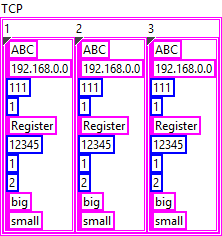
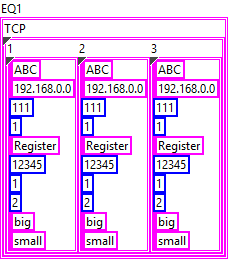
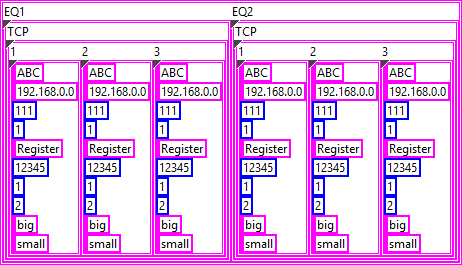




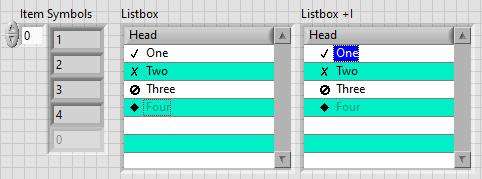

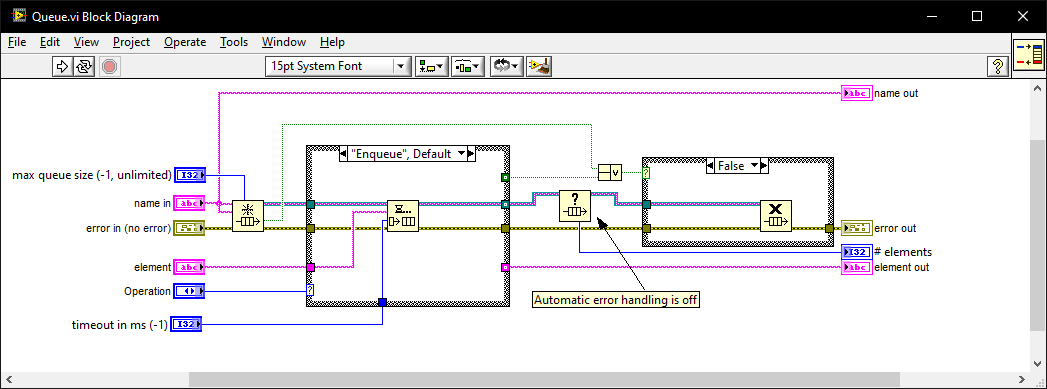
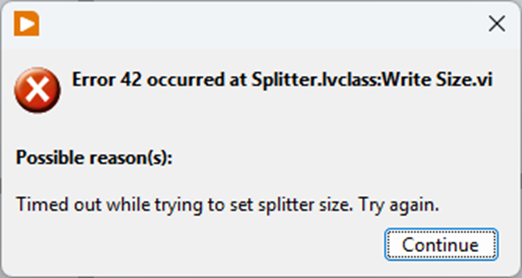

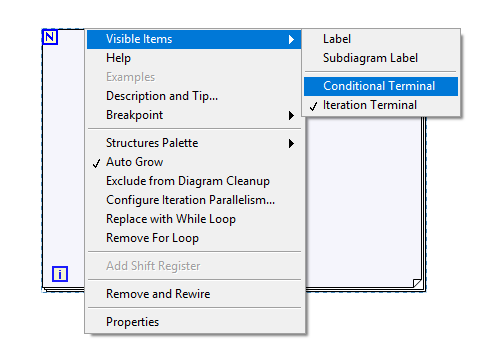
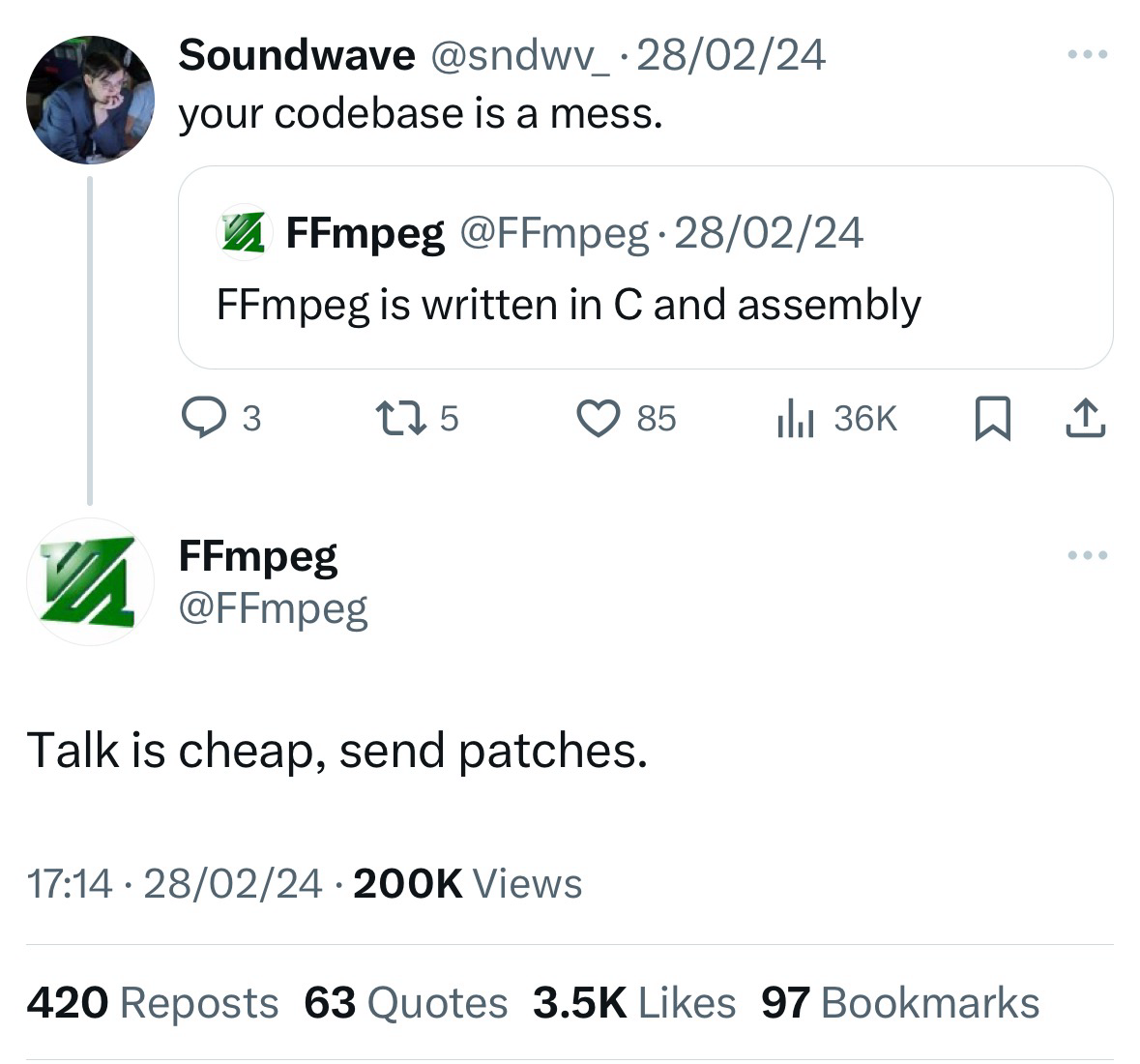
.thumb.jpg.5d2ee2fea691c9fe3fab4270ba8e531d.jpg)

